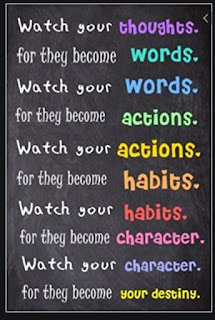Fellow Fast Llamas,
We are back for part 3 of our series, using Doug Curry's free resources on his website. This article, "How to Become a Slow Llama", can be found at http://www.fastllama.com/llama-lessons-for-the-whole-year
Here's our friend Doug Curry -
Words You Can’t Take Back
I have the wonderful privilege of presenting with Tina Schuler, author of the book, Bridge Builders. Tina and I do a two-day training called, I Just Want to Teach. Tina speaks about what she refers to as “natural language.” This is the language that we want to use that best describes exactly how we are feeling at the moment. Hit your thumb with a hammer? Probably some natural language is going to occur. Student makes you really mad? Well……..certainly we all get mad. We all get frustrated. Students are challenging. However, professionals refrain from using natural language when working with students. 100% of the time. Yeah, that’s right. 100% of the time.
Professionals use “professional language.”
Why is professional language so important? Professional language is essential as it is the only language that will enable you to truly help students. The obvious reason is that the world expects you to speak and act as a professional. But the reality is, that when you give in to that worst part of you and use hateful, mean, sarcastic, and judgmental language with a student, the relationship is pretty much over.
Ask yourself: Do you like to hang out with people who treat you poorly and say hateful things about you? Don’t think so. The other reality about the need for professional language is that students with emotional difficulties can only be helped by a loving and caring person who does not “react” emotionally to anything that the child does.
The adult cares, but maintains the role of a dispassionate observer. Only then do you have anything to offer a child experiencing difficulty.
Since we are all so ridiculously imperfect, and we all have feelings, how do we avoid natural language? It’s simply a commitment, which is another way of saying, “FAKE IT!”
This speaks to me (no pun intended). Remember, Everything Speaks! Everything you do or say or even wear is sending a message to the world around you. That's the bad news, because you might not be intentionally sending out a negative message, or the message is only in part of who you are. The good news is, you do have control over how you respond and the message you send out to the world. Especially when things don't go your way. How you respond in adversity speaks volumes. Your kids are watching!
One time, I had a group of student council kids leave for a field trip in the morning. When they came back to campus, their sponsor let them go to some core classes for makeup during what would have been their STUCO class period. When the class was over, one STUCO student said to me, "you talk differently to this class, than you do to ours".
I was floored. Because I knew he was correct. I did speak to that class in short tempered bursts and exasperated sentences. I could feel it... and I was ashamed.
I was doing a great job in making sure the students knew I didn't like them... I was an expert at it.
This was an important moment for me and though it hurt, the reflection it caused created a shift in me that I have not forgotten.
So, here is something think about.
Let's say it's test day. You have a full class and it is after lunch, which you didn't have time to eat, The kids are getting ready to test.
It looks and sounds like this...
Students are handing in their Brain Dumps, putting away backpacks, you are reminding them about phones, bubble scan sheets are being picked up, calculators are being picked up & kids are sharpening pencils. The room is BUSY. 2 kids are out today, 2 kids were out yesterday and want to know if they have to take the test. There is a lot going on. Time is ticking, because the test is taking the whole class time for most students, and you still want to get them to their Alpha State before they begin. Tick, Tick, Tick...
Then, one kid asks...
"How many questions are on the test?"
How you respond is what we are talking about today. Will you answer in a snarky, "you are about to find out!", a sarcastic, "divide 1000 by 40!", an exasperated, "oh my gosh, it doesn't matter!"
Or
You can simply smile and say, "25."
Shift happens
Speaking With Good Purpose
One of the 8 Keys of Excellence focuses on our speech. The way we speak and our intentions with the words - matters. It all starts with awareness.
Your words have power... they can cut others down or lift up their spirits. These words are also the words you hear in your head... be careful to choose those words wisely too.
I'll finish today with Haim Ginott. The famous educator and author. He asserted that children learned how their teachers felt about them by how the spoke to them... that "if you want children to improve, let them overhear the nice things you say about them to others."








